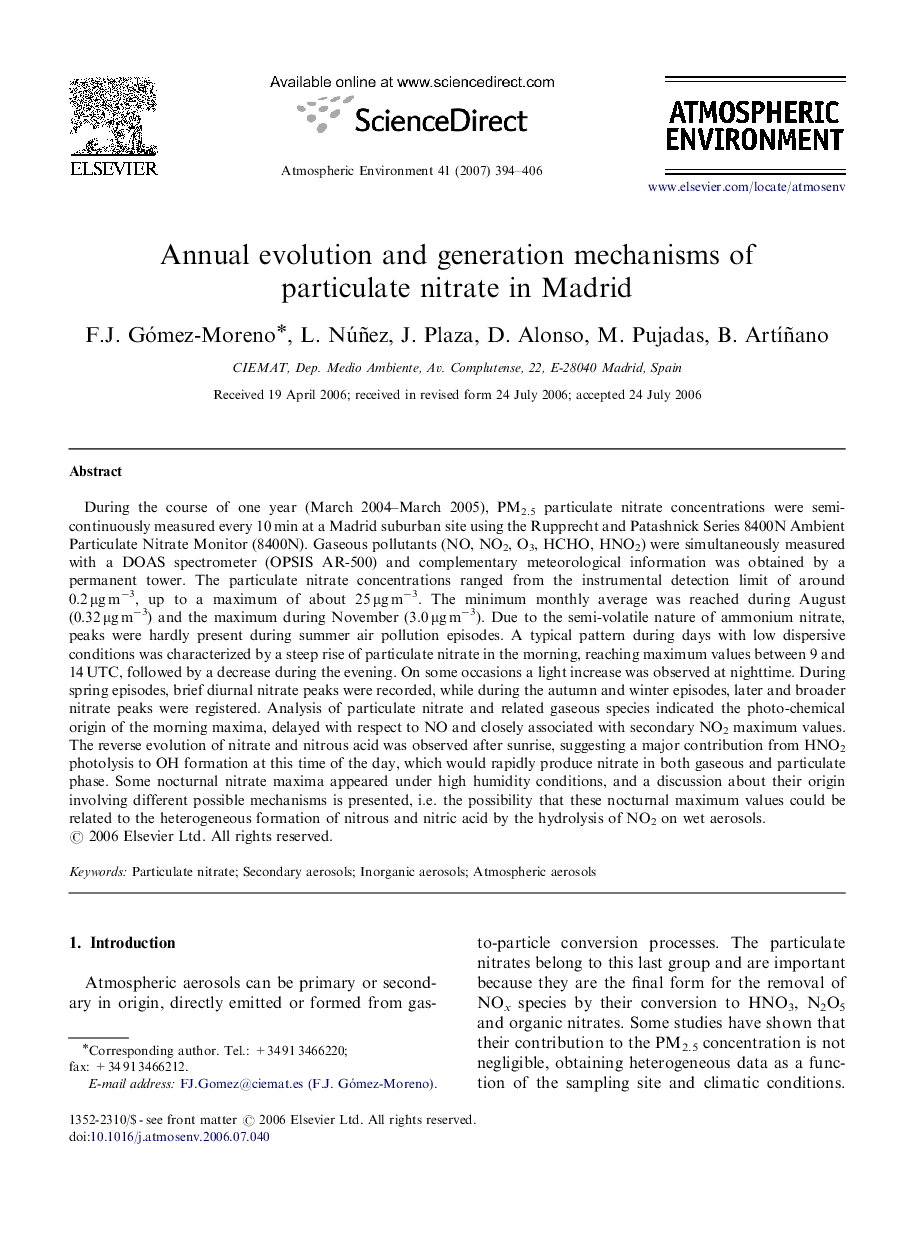| Article ID | Journal | Published Year | Pages | File Type |
|---|---|---|---|---|
| 4443959 | Atmospheric Environment | 2007 | 13 Pages |
During the course of one year (March 2004–March 2005), PM2.5 particulate nitrate concentrations were semi-continuously measured every 10 min at a Madrid suburban site using the Rupprecht and Patashnick Series 8400N Ambient Particulate Nitrate Monitor (8400N). Gaseous pollutants (NO, NO2, O3, HCHO, HNO2) were simultaneously measured with a DOAS spectrometer (OPSIS AR-500) and complementary meteorological information was obtained by a permanent tower. The particulate nitrate concentrations ranged from the instrumental detection limit of around 0.2 μg m−3, up to a maximum of about 25 μg m−3. The minimum monthly average was reached during August (0.32 μg m−3) and the maximum during November (3.0 μg m−3). Due to the semi-volatile nature of ammonium nitrate, peaks were hardly present during summer air pollution episodes. A typical pattern during days with low dispersive conditions was characterized by a steep rise of particulate nitrate in the morning, reaching maximum values between 9 and 14 UTC, followed by a decrease during the evening. On some occasions a light increase was observed at nighttime. During spring episodes, brief diurnal nitrate peaks were recorded, while during the autumn and winter episodes, later and broader nitrate peaks were registered. Analysis of particulate nitrate and related gaseous species indicated the photo-chemical origin of the morning maxima, delayed with respect to NO and closely associated with secondary NO2 maximum values. The reverse evolution of nitrate and nitrous acid was observed after sunrise, suggesting a major contribution from HNO2 photolysis to OH formation at this time of the day, which would rapidly produce nitrate in both gaseous and particulate phase. Some nocturnal nitrate maxima appeared under high humidity conditions, and a discussion about their origin involving different possible mechanisms is presented, i.e. the possibility that these nocturnal maximum values could be related to the heterogeneous formation of nitrous and nitric acid by the hydrolysis of NO2 on wet aerosols.
